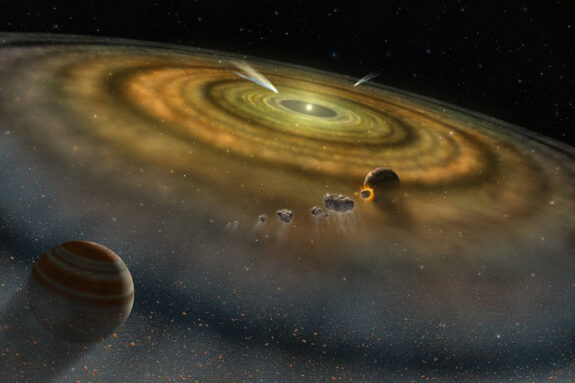3 Questions: O’Gorman awarded the 2023 Haurwitz Lectureship by the American Meteorological Society

Department of Earth, Atmospheric and Planetary Sciences (EAPS) Professor Paul O’Gorman was recently awarded the American Meteorological Society’s (AMS) 2023 Bernhard Haurwitz Memorial Lectureship. The lectureship recognizes outstanding mid-career scientists who have made “significant contributions to the understanding of atmospheric and ocean fluid dynamics, the circulation of the middle atmosphere, or the dynamics of climate”. It is named for Bernhard Haurwitz, a meteorologist and physicist known for his work in fluid dynamics of the oceans and atmosphere, as well as a dedication to education.
O’Gorman’s research focuses on large-scale dynamics of the atmosphere, understanding how precipitation and atmospheric circulation respond to climate change while also finding ways to improve climate modeling. He joined the MIT faculty in 2008.
O’Gorman took a moment to discuss what work the lectureship recognizes, as well as future plans for both his research and his lecture, which will most likely be given at the AMS 24th Conference on Atmospheric and Oceanic Fluid Dynamics.
Q: This award recognizes you “for fundamental advances in understanding the atmospheric general circulation and the hydrological cycle in different climate states”. What parts of your research do you think most fit this description?
A: My research group is focused on the response of the atmosphere to climate change: how is the atmosphere responding to the ongoing climate warming we’re seeing now, and also for the future when it could get quite a bit warmer? One example of that is how storm tracks respond to climate change in mid latitudes regions such as where we are now in Boston. The storm tracks respond differently in different seasons and in the northern hemisphere versus the southern hemisphere, and that is something we have been able to relate to the pattern of warming.
Moving to the tropics, we’ve done a lot of work on what controls the vertical warming profile of the atmosphere. We see in models and some extended observations more warming higher up in the atmosphere. But exactly how much warming happens at different levels in the atmosphere makes a big difference to convective storms, for example to thunderstorms. We’ve been developing theories and trying to validate them for the vertical warming profile, and we think that’ll mean more energy for those types of storms.
We’ve also looked at really basic things like why the land is warming more than the ocean. It turns out that the fluid dynamics of the atmosphere matters for this warming contrast, and it’s not just that the ocean has more effective heat capacity, it also is that the dynamics of the atmosphere connects the land and ocean in a way that means more warming over land because the land is drier than the ocean.
Q: What are the next steps in your research?
A: There’s two things that are really compelling to me. One is the regional pattern to how extreme rainfall changes as the climate warms. Our research indicates it’s changing differently in different regions, for example Europe versus the US versus India. We think the regional differences are due to changes in the winds associated with the storms that are producing these events as the climate warms. That involves the fluid dynamics of the atmosphere, and so it’s something that is both important to society and is a rich dynamical problem.
The second problem that I’d like to make some more theoretical progress on is how the atmosphere works in very warm climates. So not just the warming we’re seeing now and in the next few decades, but if the atmosphere warms much more than that as it did in past climates or even on exoplanets that we may not know about yet. One intriguing result we’ve seen is that the fastest-growing mid latitude cyclones can change in nature from something that’s more like a wave to something that’s more vortex-like, so we’d like to understand that better and what are the implications of that.
Q: The award also includes giving a lecture. What topic are you thinking of presenting on?
A: Much of my research group’s work has centered on the role of water vapor in the atmosphere, and how increases in water vapor with warming affect the circulation from small scale convection to large scale weather systems and precipitation patterns. So I think I’d like to give a talk about the many ways in which increases in the amount of water vapor are affecting the atmosphere, the winds in particular, and also precipitation in different regions. That’s a unifying aspect of what we’ve been working on, and I think it’d be great to have a talk that brings that all together.


